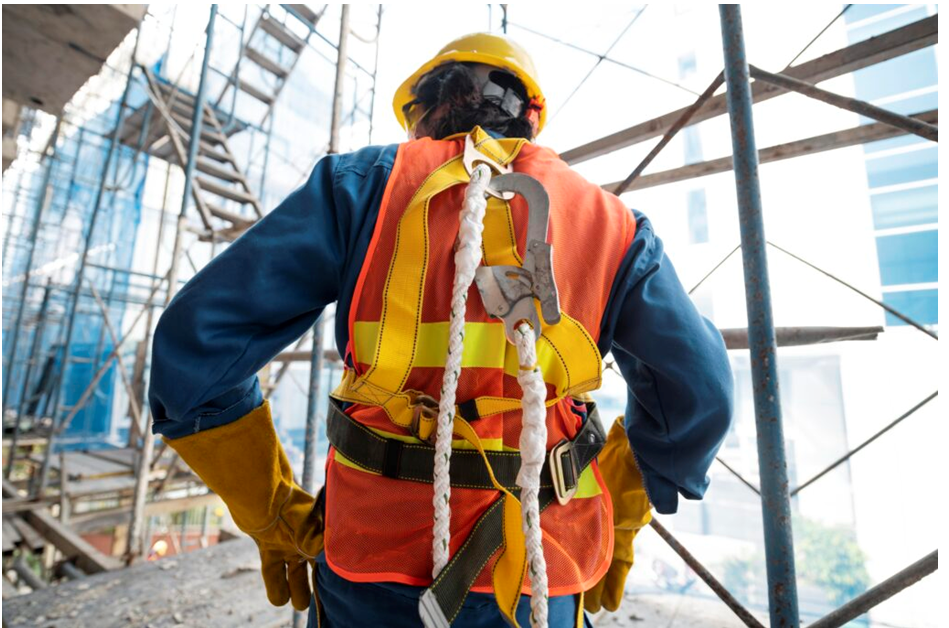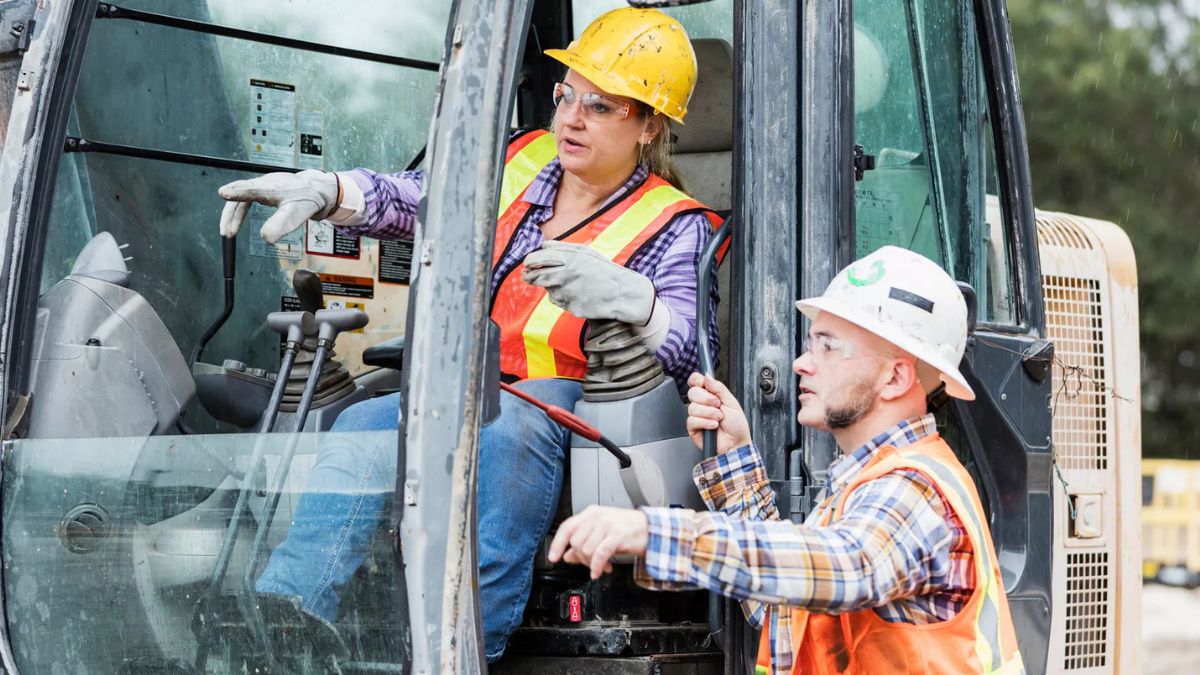CONSTRUCTION
How Asphalt Innovations Are Paving the Future of Infrastructure

As roads age and travel needs change, examining how asphalt paving services are evolving to meet modern demands is crucial. From enhancing durability to incorporating smart technologies, asphalt innovations reshape the infrastructure supporting contemporary society. Whether traversing urban jungles or navigating rural byways, the asphalt under our wheels is pivotal in ensuring our journeys are safe and smooth. By adopting cutting-edge techniques and sustainable materials, the paving industry is improving the quality of our roads and reducing environmental impact.
The globe is moving toward sustainable options, and paving technologies lead this initiative. With the increasing demand for more substantial and eco-friendly materials, the road construction sector is responding by introducing innovative advancements to create a significant impression on city and countryside environments. This trend toward innovation is driven by the need for longer-lasting roads that can withstand increased traffic and changing weather patterns while minimizing carbon footprints.
Introduction to Asphalt Innovations
The asphalt industry is undergoing a significant transformation. Researchers and engineers are pioneering methods to improve traditional paving techniques in response to increasing environmental concerns and the urgent need for resilient infrastructure. These innovations include using new materials, improved engineering practices, and technology integrations to create more sustainable and durable infrastructure. Advances in asphalt have opened the door to a future where roads are smarter, more efficient, and sustainable.
The Shift Towards Eco-Friendly Asphalt
With the global push towards sustainability, there’s a growing interest in developing eco-friendly asphalt alternatives. One significant development is bioasphalt, which is made from renewable natural resources. These materials significantly decrease the carbon footprint linked to traditional asphalt production. As environmental policies tighten and ecological awareness heightens, using alternative materials becomes an increasingly attractive proposition. You can delve deeper into the potential and benefits of bioasphalt by exploring current bioasphalt developments. The shift is both environmentally favorable and economically viable as these solutions promise cost-effectiveness in production and longevity.
Smart Technology in Road Construction
Smart technology is increasingly incorporated into road construction to enhance performance and durability. Innovations such as embedded sensors monitor pavement conditions in real time, making roads more innovative and safer. These technologies enable effective maintenance scheduling by notifying operators of possible concerns before they escalate into major problems. The inclusion of data analytics and the Internet of Things (IoT) in road construction helps forecast maintenance needs accurately, drastically reducing upkeep costs over time and ensuring roads are safer for prolonged periods.
Long-Lasting Pavements: The Road to Durability
One of the central goals of current innovations is to extend the lifespan of pavements, thereby reducing the frequency of repairs and minimizing traffic disruptions. It is achieved by using high-performance materials that resist wear and tear. These advancements suggest a path forward where roads can maintain structural integrity over extended periods, withstanding increased vehicle loads and varying climatic conditions. Long-lasting pavements not only offer significant savings in maintenance but also conserve resources by reducing the need for frequent rebuilds, proving to be a win-win for taxpayers and governments alike.
Recycling: The Green Future of Asphalt
Recycling old asphalt is not only cost-effective but also environmentally beneficial. Reclaimed Asphalt Pavement (RAP) is increasingly used in new pavement projects to reduce the demand for raw resources and support sustainable construction practices. RAP helps reduce landfill waste, lower greenhouse gas emissions, and conserve virgin materials. It’s a practice that aligns with global sustainability goals and solves the rising costs of new resources. Learn more about recent asphalt recycling practices and how they contribute to a greener future.
Case Studies: Successful Asphalt Innovations
Cities globally have effectively executed creative asphalt initiatives. For instance, Amsterdam utilizes advanced porous asphalt to help manage stormwater and reduce flood risks, showcasing a practical application of innovation that addresses modern urban challenges. By comparing these technologies with traditional methods, we can see marked improvements in road durability and environmental support. Such examples serve as inspiration and blueprints for other municipalities and developers aiming to modernize infrastructure while balancing ecological responsibilities.
Challenges in Asphalt Innovations
Despite the promising advancements, several challenges remain. High costs of new technologies, logistical hurdles in sourcing materials, and resistance to changing from traditional practices are significant barriers. Additionally, achieving widespread adoption of these innovative solutions requires education and demonstrating their long-term benefits. Overcoming these challenges ensures these innovations translate into mainstream construction practices. By addressing these obstacles, the industry can push for greater acceptance and broader implementation of sustainable practices in road construction.
The Road Ahead: Future Trends in Asphalt
The future of asphalt paving is geared toward further integration of sustainable and smart technologies. Innovations such as self-healing materials that repair themselves over time and developing carbon-neutral asphalt mixtures are expected to transform the industry. These materials science and engineering breakthroughs are setting the stage for a revolution in building and maintaining our roads, promising a future where our infrastructure is not just a necessity but a testament to our commitment to sustainability and innovation.
CONSTRUCTION
What Must Victims Do After a Construction Site Accident?

A construction site accident turns life upside down in an instant. One moment, everything seems fine; the subsequent pain, confusion, and uncertainty take over. Medical bills pile up. Employers and insurance companies push for quick resolutions. The physical toll alone makes it difficult to focus on what comes next.
For those injured, seeking justice and fair compensation requires swift action. The priority remains getting medical attention. Beyond that, victims must protect their rights, gather evidence, and ensure their voices are heard. A key step involves reaching out to the right legal professional. Those who contact a construction accident lawyer gain a powerful advocate to handle claims, deal with insurance adjusters, and fight for what’s fair.
This post outlines the critical steps every victim must take after a construction site accident to secure their health, finances, and future.
Seek Immediate Medical Attention
Health takes priority after a construction site accident. Even minor injuries might develop into serious complications. Seeking medical attention immediately ensures proper treatment and creates an official injury record. Delaying medical care weakens future claims, as insurance companies might argue that the injuries were minor or resulted from something else.
Report the Incident to the Employer
Informing the employer or site manager about the accident remains a critical step. This report should happen as soon as possible and in writing. Many construction companies have protocols for documenting accidents, but victims must ensure that the details accurately reflect what happened. Keeping a copy of the report helps prevent any alterations or misrepresentations later.
Gather Evidence at the Scene
If possible, collecting evidence strengthens any future claims. Taking clear photos of the accident scene, injuries, equipment involved, and hazardous conditions helps establish what led to the accident. Witnesses also play a crucial role. Gathering their statements or contact information allows for additional testimony if needed later.
Keep Detailed Records
Maintaining a file with all medical reports, accident-related expenses, lost wages, and communications with employers or insurance adjusters helps build a strong case. Documenting symptoms, treatments, and how the injury affects daily life further proves its impact.
Avoid Speaking to Insurance Adjusters Alone
Insurance companies often try to minimize payouts. Speaking to them without proper guidance leads to mistakes that harm a claim. They might ask leading questions, request recorded statements, or offer quick settlements that fail to cover long-term expenses. Proceeding cautiously prevents accepting less than what is deserved.
Follow Medical Advice
Ignoring a doctor’s recommendations delays recovery and weakens a claim. Missing appointments or failing to follow prescribed treatments gives the opposition a reason to argue that the injury is not serious. Staying consistent with medical care supports both healing and legal claims.
Stay Off Social Media
Discussing accidents or injuries on social media creates problems. Insurance companies and opposing parties look for anything that contradicts claims of pain, suffering, or inability to work. Even an innocent post showing normal activities might be used against the victim. Keeping details private helps protect the case.
Every step taken after a construction site accident shapes the outcome. Prioritizing medical care, reporting the incident, collecting evidence, and staying cautious with insurance companies ensure a stronger case. Keeping records and avoiding social media mistakes prevent setbacks. The right approach makes a significant difference in securing proper compensation and justice.
CONSTRUCTION
A Guide to Selecting the Perfect Countertops for Your Home

Choosing the right surface for your kitchen or bathroom can make a big difference in appearance and function. With so many options available, it’s essential to consider factors like durability, maintenance, and style. The right choice will match your design preferences and meet your everyday needs.
Countertops play a key role in how a space looks and performs. Some materials require little upkeep, while others may need regular sealing or special care. When deciding, it’s essential to consider cost and durability. Whether you lean towards traditional natural stone or a more economical option, being aware of the advantages and disadvantages of each choice will aid you in selecting the most suitable one. Investing time in comparing different materials and finishes can help you make a practical and enduring selection for your home.
Choosing the Right Material
When selecting countertops for your home, your chosen material plays a key role in durability, maintenance, and overall look. Granite countertops are popular because they are strong, heat-resistant, and easy to clean. They work well in kitchens where durability is essential. Other materials, like quartz and laminate, offer different benefits, such as low maintenance or budget-friendly pricing. If you prefer a natural look, wood and marble provide unique patterns but may require more upkeep. Consider how much daily use your countertops will get and how much maintenance you are willing to do. Some materials need sealing to prevent stains, while others resist spills naturally.
The Importance of Countertop Design
Countertop design is essential in transforming a kitchen into a charming and stylish space. It involves elements such as color, texture, and edge style, all of which can complement the existing decor. Neutral colors can help unify various design elements, while dramatic veining patterns or bold colors add visual interest. Different textures, with finishes ranging from polished to matte, create distinct atmospheres. Additionally, edge styles like beveled, bullnose, and waterfall enhance the kitchen’s character. Customization plays a crucial role in combining these design elements, enabling homeowners to craft a kitchen that showcases their character and way of living. The countertop design is essential for achieving a cohesive kitchen aesthetic.
Understanding Current Countertop Trends
Modern countertop trends appeal to homeowners with bold colors, mixed materials, and earthy tones. These styles reflect a growing preference for sustainable and grounded aesthetics. New materials like sintered stone and terrazzo offer durability and unique textures. Additionally, artistic or unexpected elements, like reclaimed wood and metal accents, are gaining popularity.
These trends enhance contemporary kitchens and boost property values, creating inviting spaces that encourage admiration and conversation. Homeowners can foster a warm and welcoming environment by incorporating these design elements.
Functional Considerations for Homeowners
Homeowners should prioritize functionality over aesthetics when selecting countertops. Practical factors such as heat resistance, scratch resistance, and stain prevention are essential, especially in high-usage kitchens. Granite and engineered stones like quartz are great choices because they offer heat resistance, making them suitable for busy kitchens. Additionally, scratch resistance is essential for families with young children or those who enjoy cooking. Quartz, in particular, provides exceptional durability against nicks and scratches. It’s also important to consider lifestyle preferences and maintenance needs to ensure that the countertops fit seamlessly into daily routines. Ultimately, the right choice of countertops depends on the homeowner’s specific needs and lifestyle preferences.
Proper Maintenance Tips for Longevity
An organized maintenance schedule is crucial for maintaining the appearance and durability of countertops. Various materials exhibit unique responses to use and damage, necessitating tailored maintenance approaches. For instance, granite countertops might require regular sealing to avoid stains, whereas quartz surfaces typically demand less upkeep. It is advisable to clean surfaces regularly using non-abrasive cleaners and soft cloths. To extend the life of your countertops, address spills promptly, use trivets to protect surfaces from hot items, and always use cutting boards when preparing food. By taking a proactive approach tailored to the unique needs of your countertop material, you can maintain a pristine kitchen space.
CONSTRUCTION
Safety First: Essential Tips to Prevent Construction Accidents

Construction Safety: A Vital Concern
Construction sites are a hub of intense activity where multiple processes occur simultaneously. This dynamic environment is fraught with risks, and maintaining the safety of workers and bystanders is of paramount importance. The priority on any construction site is to safeguard human life by implementing rigorous safety measures. However, despite best efforts, accidents can and do happen. In such unfortunate events, some individuals may seek help with construction accident claims to navigate the aftermath and secure compensation for injuries sustained. Prioritizing safety is not just a matter of responsibility but is crucial for the well-being of everyone on site.
Common Causes of Construction Accidents
Understanding the typical causes of construction accidents is a vital step toward prevention. Falls from heights are among the most prevalent incidents and often result from inadequate safety measures or overlooked risk assessments. Equipment failures and improper machinery use are also significant contributors to site accidents. Such incidents are frequently tied to a lack of maintenance or insufficient training in the proper operation of machinery. By identifying these root causes, stakeholders in the construction industry can address the weaknesses in safety procedures and train employees accordingly to prevent future mishaps.
Preventive Measures for Enhancing Safety
Establishing preventive measures requires a proactive stance toward construction safety, Which begins with crafting comprehensive safety protocols that all employees must follow. Regular safety audits and hazard assessments form the foundation of these preventive strategies. These measures keep potential risks in check and ensure that safety standards evolve alongside technological advances and changing site conditions. Fostering a safety-centric culture is equally important, as it empowers workers to voice concerns and report hazards without fear of reprisal. When safety becomes a shared responsibility, the risk of accidents is significantly reduced.
The Role of Personal Protective Equipment
Personal Protective Equipment (PPE) is indispensable in fortifying the first line of defense against workplace injuries. Items such as helmets, gloves, safety boots, and vests are designed to protect workers from potential hazards that may arise unexpectedly. It is not enough to merely provide PPE; ensuring proper usage is key to its effectiveness. Regular inspections and maintenance of equipment guarantee their reliability over time. Employers must emphasize PPE’s importance, making sure that all workers understand how to utilize it correctly. By doing so, they protect their employees and demonstrate a dedication to maintaining a safe working environment.
Leveraging Technology for Safety
The construction industry has begun to adopt cutting-edge technologies to enhance safety protocols. Drones offer critical oversight by providing aerial views of construction sites and identifying hazards that might not be apparent from the ground level. Wearable devices and sensors capable of monitoring workers’ vital signs alert them and their supervisors to potential health risks before they escalate into safety incidents. Similarly, Virtual Reality (VR) training can simulate hazardous scenarios, helping workers practice emergency responses in a controlled environment. These innovative tools and technologies hold the promise of significantly reducing construction site accidents and reshaping safety standards.
Importance of Training and Regular Safety Drills
Effective safety training programs are crucial for preparing workers to handle the myriad of risks present on construction sites. Comprehensive training ensures workers are familiar with both the commonplace risks and the less obvious hazards. Regular safety drills simulate emergency situations, allowing employees to rehearse their responses and refine their skills in a controlled setting. By prioritizing training, employers invest in a workforce that is not only well-versed in safety protocols but also equipped to act swiftly and correctly to prevent accidents and minimize their impact.
Role of Regulations and Compliance
Health and safety regulations serve as the backbone of workplace safety across the construction industry. These guidelines lay out the minimum safety standards required to protect workers and ensure operations comply with legal obligations. Adherence to these regulations reduces the incidence of accidents and protects companies from potential legal liabilities. Staying informed about the latest regulatory updates is essential, as such compliance reflects a commitment to safety and enhances organizational credibility. For more information on maintaining compliance, resources like OSHA offer valuable insights and guidelines.
Real-Life Examples and Lessons Learned
Learning from the past is an effective strategy for preventing future incidents. Analyzing real-life case studies where safety measures were either upheld or failed offers invaluable lessons. For example, scrutinizing incidents that resulted from overlooked safety protocols can highlight the importance of vigilance and adherence to established guidelines. Reflecting on successful strategies aids in reinforcing the best practices within the industry. By continuously learning from such examples, construction sites can evolve into safer environments where every participant contributes to a culture of safety and prevention.
-

 BLOG1 year ago
BLOG1 year agoATFBooru: A Hub for Animated Art and Community
-

 CONSTRUCTION12 months ago
CONSTRUCTION12 months agoBuilding a Home Gym in Your Basement (7 Key Renovation Tips)
-

 BLOG1 year ago
BLOG1 year agoFictionmania: A Deep Dive into the World of Transformative Stories
-

 GAMES1 year ago
GAMES1 year agoSnow Rider 3D: Unblocked Tips and Tricks for Gamers
-

 BLOG11 months ago
BLOG11 months agoGIFHQ: A Comprehensive Guide
-

 BLOG1 year ago
BLOG1 year agoVincent herbert new wife: A Detailed Overview
-

 BUSINESS1 year ago
BUSINESS1 year agoInvestiit.com Tips: A Comprehensive Guide for Smart Investing
-

 BLOG1 year ago
BLOG1 year agoWNFLB: A Deep Dive into Its Impact on Women’s Sports Introduction to the WNFLB
